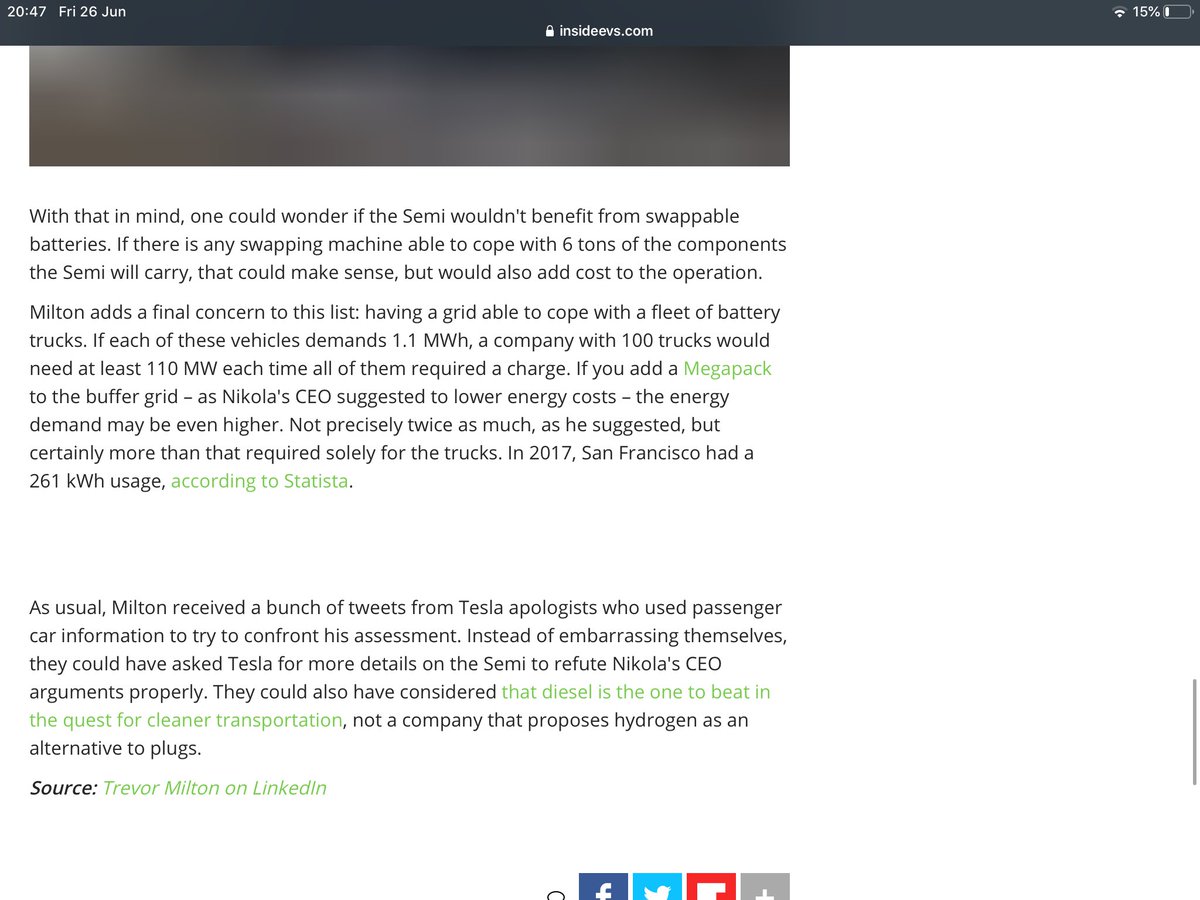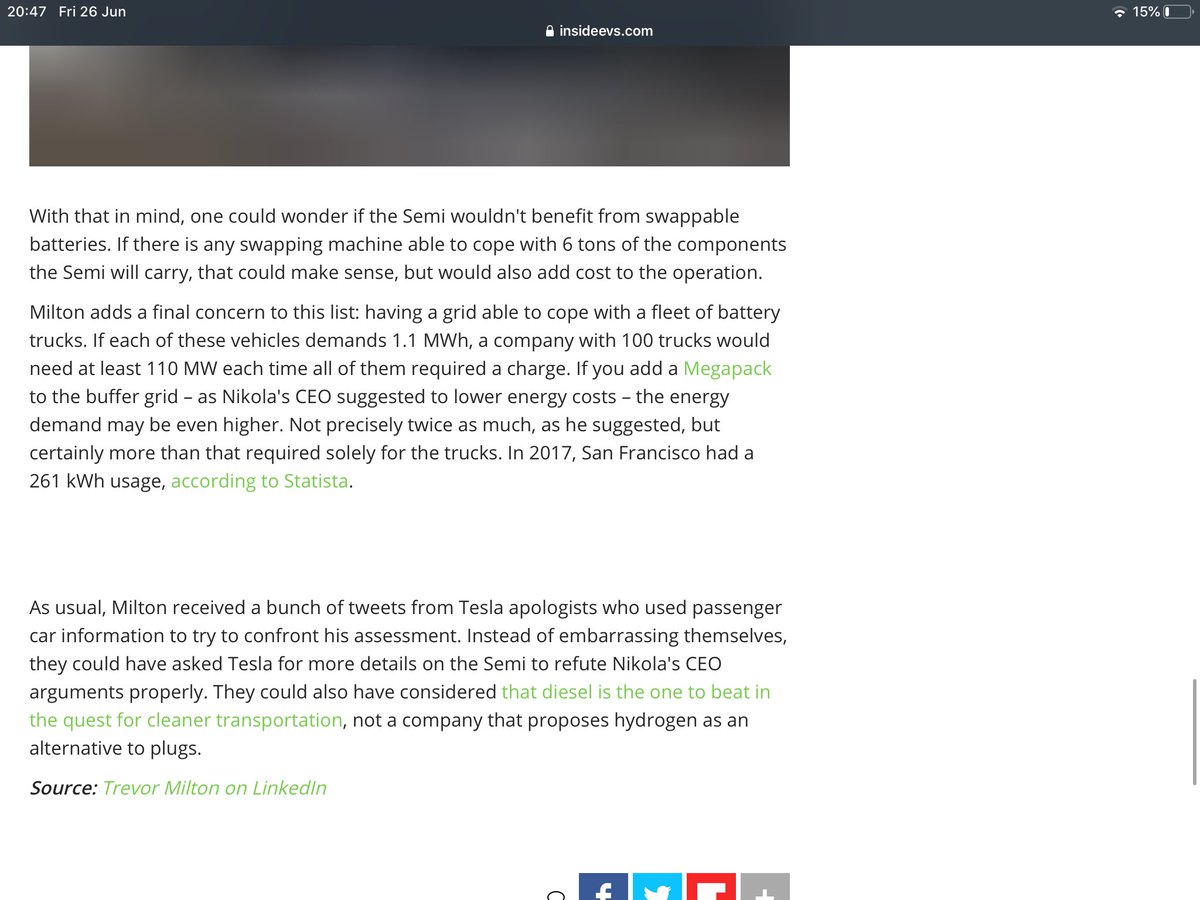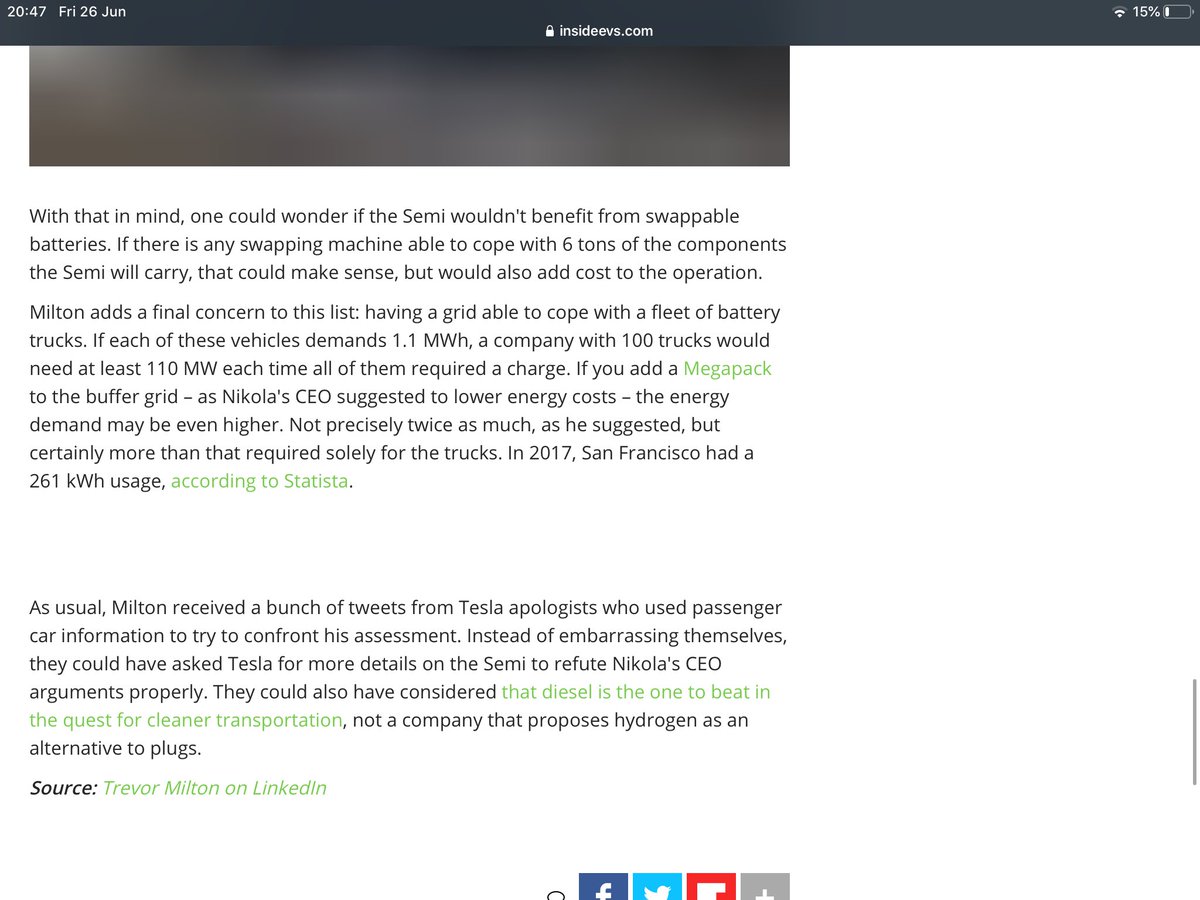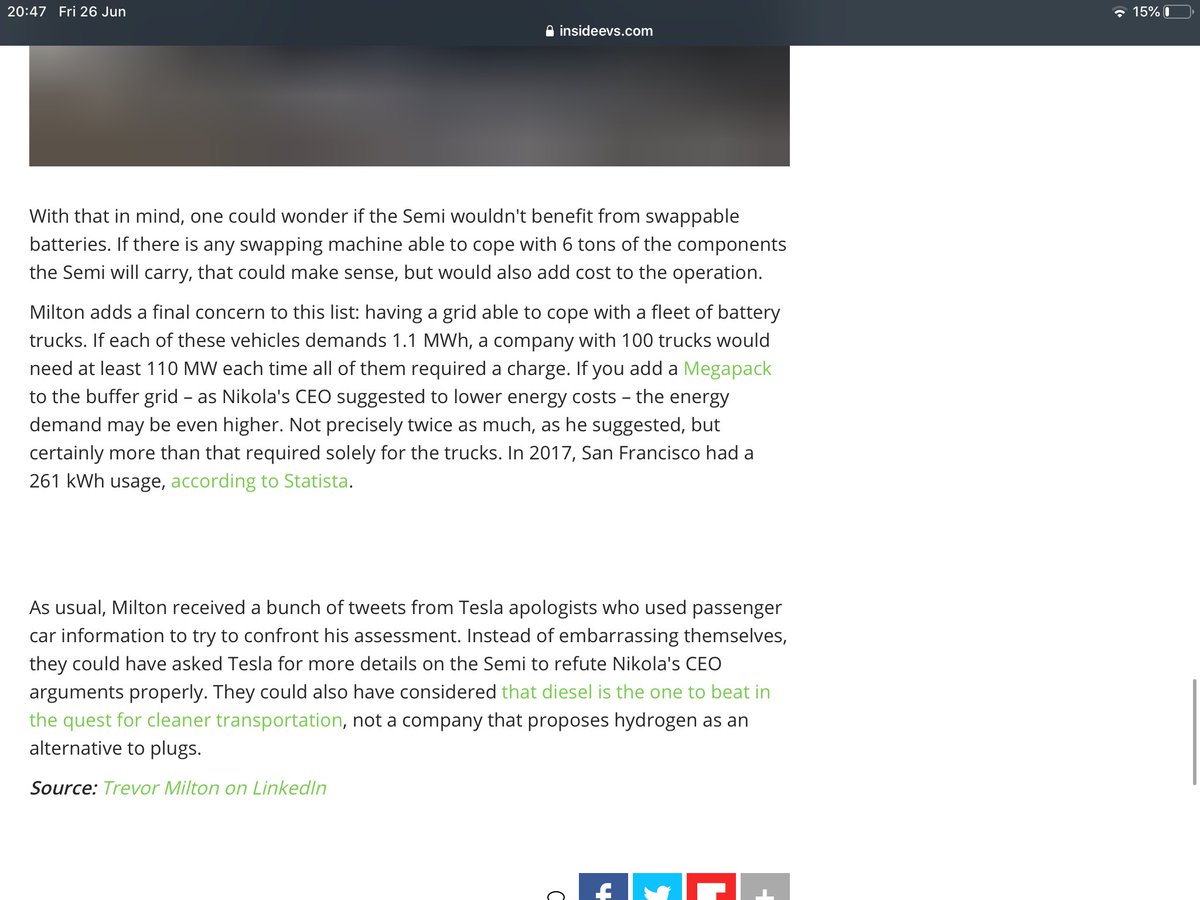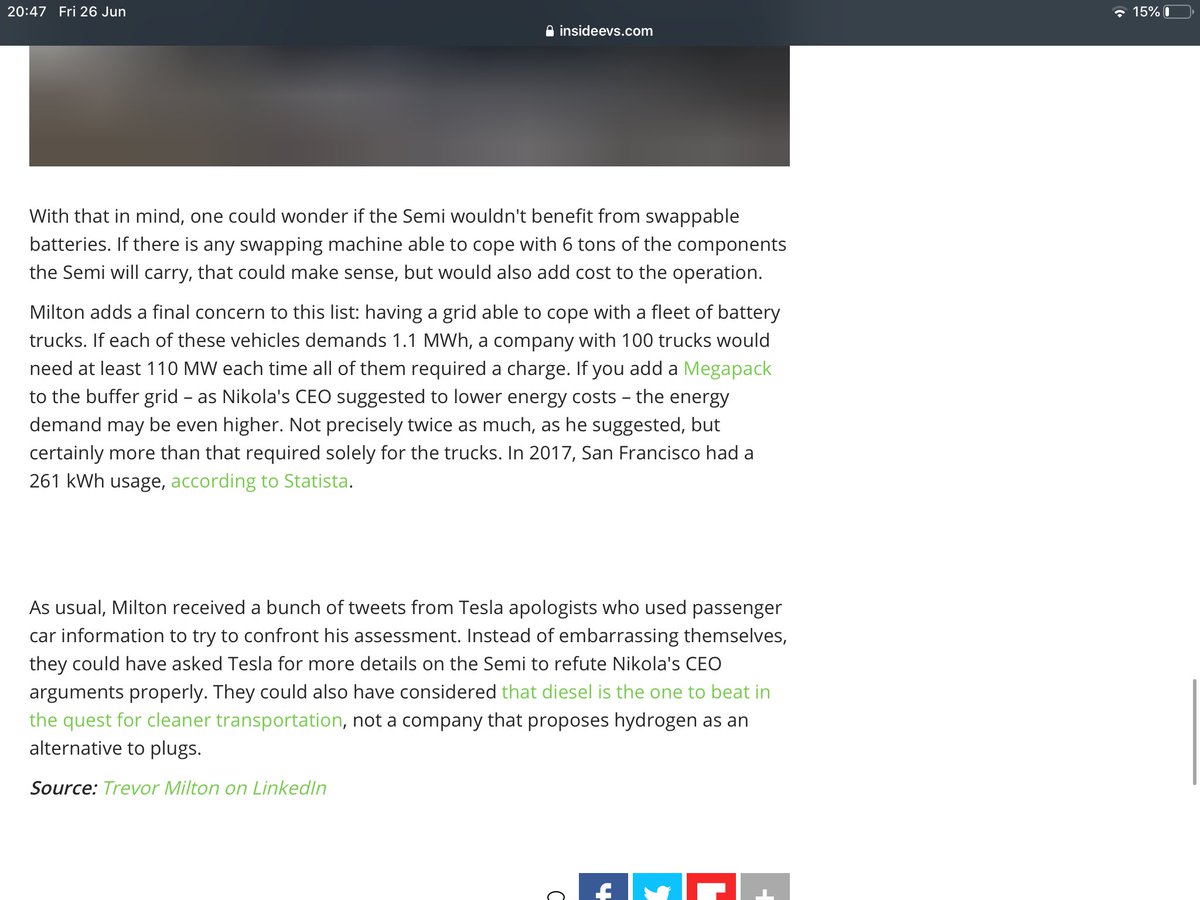$NKLA $NKLAQ
I just read this P.O.S. Such bullshit lies!
Ruffo (author) is full $TSLAQ at this point.
Ok, I guess that means it’s time for yet another thread to debunk this fool.
[Strap in, kids, it’s going to be a bumpy ride!] https://twitter.com/nikola_truth/status/1276599998042554369">https://twitter.com/nikola_tr...
I just read this P.O.S. Such bullshit lies!
Ruffo (author) is full $TSLAQ at this point.
Ok, I guess that means it’s time for yet another thread to debunk this fool.
[Strap in, kids, it’s going to be a bumpy ride!] https://twitter.com/nikola_truth/status/1276599998042554369">https://twitter.com/nikola_tr...
[Before we begin, I already debunked the fuck out of the source article on Trevor’s LinkedIN. If you haven’t read it, I recommend you read this other thread first!]
https://twitter.com/nikola_truth/status/1274818000563175424?s=21">https://twitter.com/nikola_tr... https://twitter.com/nikola_truth/status/1274818000563175424">https://twitter.com/nikola_tr...
https://twitter.com/nikola_truth/status/1274818000563175424?s=21">https://twitter.com/nikola_tr... https://twitter.com/nikola_truth/status/1274818000563175424">https://twitter.com/nikola_tr...
[Onward then]
‘Cargo transportation is a matter of cost per mile’
Ok, that’s a bit of a simplistic way to look at it but fair enough. So, how is Nikola’s cost per mile? Well, based on my slightly forgiving Maths, https://twitter.com/nikola_truth/status/1272954210150121480?s=21,">https://twitter.com/nikola_tr... a Nikola truck is significantly more https://twitter.com/nikola_truth/status/1272954210150121480">https://twitter.com/nikola_tr...
‘Cargo transportation is a matter of cost per mile’
Ok, that’s a bit of a simplistic way to look at it but fair enough. So, how is Nikola’s cost per mile? Well, based on my slightly forgiving Maths, https://twitter.com/nikola_truth/status/1272954210150121480?s=21,">https://twitter.com/nikola_tr... a Nikola truck is significantly more https://twitter.com/nikola_truth/status/1272954210150121480">https://twitter.com/nikola_tr...
expensive than a Tesla per mile. And, once the Semi has legal autonomy, the Nikola costs over double the cost per mile!
So much for Ruffo’s first paragraph then.
So much for Ruffo’s first paragraph then.
The second paragraph is a popular fiction Trevor likes to present as fact. In short, it can be summed up as ‘But I just wanna be friends’.
FRIENDS DON’T SUE FRIENDS, TREVOR!
If you think that Tesla will not compete with Nikola for the reasons Trevor proposes, then I don’t know
FRIENDS DON’T SUE FRIENDS, TREVOR!
If you think that Tesla will not compete with Nikola for the reasons Trevor proposes, then I don’t know
how to put it lightly. You are dumb! They are separate companies both intending to have products in the same market. That is *the definition* of competition! Ok, Diesel is worse, I agree, but I’m not fucking talking about that! We know that already! Stop going on about it!
[Deep breaths, Mr Tesla, deep breaths]
‘BEVs are more efficient’. Yes! Hello?! This is hugely important to per mile costs and sustainability! Why use something that needs at least twice the energy to go the same number of miles?
‘BEVs are more efficient’. Yes! Hello?! This is hugely important to per mile costs and sustainability! Why use something that needs at least twice the energy to go the same number of miles?
I still have no idea where this ‘300 miles cutoff’ came from. Is it perhaps that Nikola plans to sell a long range FCEV and a sub 300 mile BEV?
In case you didn’t click, 300 miles isn’t a cutoff point. Such a point is dependant on the state of technology, not arbitrary numbers.
In case you didn’t click, 300 miles isn’t a cutoff point. Such a point is dependant on the state of technology, not arbitrary numbers.
‘Fuel cell trucks are naturally lighter’. Umm, no, they just aren’t! That statement has been dependent on poor battery tech but the tech has caught up. Battery Day is in a few months and I’ll be damned if the production Semi is not as light, or lighter, than the equivalent FCEV.
‘If they can carry more stuff, their cost per mile already has a headstart.’ Not quite. Cost per mile is the expenditure per mile. You mean profit per mile. It’s a small mistake but it makes a huge difference.
I’m always skeptical when journos don’t get the terms right.
I’m always skeptical when journos don’t get the terms right.
[Ohh, this next one gets me into a bit of a rage]
‘Hydrogen stations can have a lower energy cost than the charging stations in cities.’ What bullshit red herring is this? That’s just the nature of grid pricing! Cities are expensive!
‘Hydrogen stations can have a lower energy cost than the charging stations in cities.’ What bullshit red herring is this? That’s just the nature of grid pricing! Cities are expensive!
As Omar said in his takedown of the OG LinkedIN post, https://wholemars.net/2020/06/21/trevor-milton-defends-nikola-hydrogen-trucks/,">https://wholemars.net/2020/06/2... comparing interstate hydrogen prices to intracity grids is just comparing two grid costs.
If a BEV truck were to take the same route as a long haul FCEV, they too would pay the same cheap rates!
If a BEV truck were to take the same route as a long haul FCEV, they too would pay the same cheap rates!
‘The price of supercharging makes it dangerously close to ... gas’
What?! First off, what the fuck is dangerous about it? Secondly, Tesla charges whatever they want for superchargers. The reason they are expensive is because that dissuades them from being overused.
What?! First off, what the fuck is dangerous about it? Secondly, Tesla charges whatever they want for superchargers. The reason they are expensive is because that dissuades them from being overused.
Tesla has long said that Supercharging isn’t to be a profit centre. As such, if they wanted to lower prices, they could!
‘According to Milton, etc.’ Why the fuck are you listening to Milton?! Does or did he ever work at Tesla? No! Trevor is severely mistaken if he thinks
‘According to Milton, etc.’ Why the fuck are you listening to Milton?! Does or did he ever work at Tesla? No! Trevor is severely mistaken if he thinks
utilities are the reason for the Supercharger rates. And either way, Tesla has guaranteed that Semi charging rates wil, be $0.07\kWh across all America! That means cities, interstates and everything inbetween!
Now I’m a little confused about this PPA because I heard Trevor say on an interview that he’ll make his margins by reducing hydrogen prices during each lease. If the energy prices are set for 20 years, this is impossible! Why do Trevor’s statements have so many internal flaws?
[I wonder how many tweets the thread will take this time]
500 miles is $250? I don’t know how Trevor came up with this number given that he doesn’t have any hydrogen production. If I didn’t know better, I’d say he plucked the number from his arse!
500 miles is $250? I don’t know how Trevor came up with this number given that he doesn’t have any hydrogen production. If I didn’t know better, I’d say he plucked the number from his arse!
Ok, time to dispel the ‘1.1MWh’ lie. According to Tesla’s website, the Semi will have 500miles of range and uses <2kWh/mile. That means that the Semi has *less than* 1MWh! At $0.07/kWh, that means the Semi would cost under $70 to recharge! That’s less than a third of the Nikola!
I’m completely baffled as to how Ruffo thinks charging cost relates to weight. But let’s see what he has to say next...
What the fuck is it with Ruffo trusting Milton’s word about Tesla’s tech? Milton doesn’t know jack shit about Tesla’s tech!
The batteries need to be replaced after 500k miles? No! Tesla has revealed a 1 million mile battery FFS! Model S will have battery tech that’s two
The batteries need to be replaced after 500k miles? No! Tesla has revealed a 1 million mile battery FFS! Model S will have battery tech that’s two
generations old! Using those numbers for the Semi is nothing short of a lie. And even if the Semi uses the current 21700s, no Model 3 has gone far enough to need a battery replacement yet to my knowledge so this 500k mile estimate is pure fiction!
That specific Model S is, frankly, irrelevant to the Semi. And anyway, it’s not as though the battery needs to be replaced and becomes completely useless. The battery can be sold for a second-life project as grid-tied storage. By the time that it takes for the battery to degrade
and factoring in the sale of the used pack, a replacement could only cost as much as $30k overall. After a million miles and 10 years, that’s not bad! In fact, I’d wager the Semi’s total maintenance cost is equal to or less than the FCEV’s total maintenance cost in 20 years.
I also do not accept that Tesla would allow charging speeds that would degrade the battery in three years! Tesla is famously good at battery management so when they announce a million-mile battery, I wouldn’t be surprised if it could actually do nearer to two million miles!
Also, Tesla didn’t ‘need’ a million-mile battery in the same way that humanity didn’t ‘need’ smartphones or the internet. Sure, we would survive without these things, but it’s the nature of STEM to create better products regardless of their vitality but in regard of importance.
[Wake up! This isn’t over yet]
Ok, I literally don’t understand the start of this sentence. Does he mean unveil them?
As for the next bit, again, *Trevor is not a Tesla news source!*. Trevor doesn’t know any more than the next trucking executive.
Ok, I literally don’t understand the start of this sentence. Does he mean unveil them?
As for the next bit, again, *Trevor is not a Tesla news source!*. Trevor doesn’t know any more than the next trucking executive.
Battery Day is yet to happen but if news is to be believed, Tesla will produce packs at $80/kWh. That would make the Semi’s <1MWh pack less than $80k, roughly two thirds of Trevor’s assertion.
The next bit is pure backwashed bullshit! Tesla is guaranteeing $0.07/kWh. However they make that is their problem but it won’t effect the competitiveness of the truck one bit! All the same, let’s go into these numbers.
Assuming as Trevor does that Tesla will use cheap off-peak energy to charge their storage packs, they would only need a fraction of the total energy if their trucks. There would also be savings in using a larger stationary Megapack for all the Megachargers.
And even then, Tesla also make their own solar panels, which covers most of the peak energy hours. In reality, for a <$80k pack, I estimate $40k per vehicle in additional stationary capacity. Now we’re at half of Trevor’s assertion
And the last bit about having to replace the stationary batteries is also unfiltered lies! With driving range no issue, there is no good reason to ever remove a storage battery, at least for many decades. Whilst a mobile pack is considered unusable after 20% capacity loss, this
is not at all true of stationary storage. Also, stationary packs would degrade far slower due to a much larger pack size. What might charge a truck 10% to 90% may only discharge the stationary pack by a few percent.
You must ask yourself why Trevor presents these lies.
You must ask yourself why Trevor presents these lies.
What even is this last paragraph? The tanks last 20 years but need to be rebuilt after 2.3 years? Given that, like most hybrids, there is always fuel in the vehicle, I see no reason that those 2.3 years would be delayed. As such, that’s 8 replacements in 20 years.
Taking the middle of the range the cost can be calculated as 8 x $7.5k, which equals $60k. As I said, the true cost of the one battery replacement is less than the hydrogen maintenance. Far less!
[Still getting through it, only two chunks left, promise!]
‘Even if it’s possible to get 80% in one hour’ Come on, Ruffo, did you do *any* research? It’s not at all hard to find that the 2017 prototype is capable of charging 400miles in only 30 minutes. Cut your bullshit FUD!
‘Even if it’s possible to get 80% in one hour’ Come on, Ruffo, did you do *any* research? It’s not at all hard to find that the 2017 prototype is capable of charging 400miles in only 30 minutes. Cut your bullshit FUD!
By the way, in many countries truckers are required to take half hour breaks after several hours of driving. And unlike refuelling, you only have to plug in the truck and you can go about your business.
Ok, and Ruffo really doesn’t understand charging speed limitations. There’s a reason why your tiny phone battery can be charged in an hour or so but your Tesla doesn’t take a whole fucking year! Provided current and voltage aren’t limited, safe charging speed is determined by the
cell’s chemistry. With enough power, it would take the same time to charge a 100kWh pack as a 10kWh pack as a 1000kWh pack. Size is not the issue! The fact that a journalist can not know this and still be allowed to write about charging speeds is a huge problem.
As for the last bit, whilst it’s true that the faster the charge, the faster the degradation, it still isn’t a really huge issue. The advice to only use Superchargers when you need to is more of a matter of congestion than battery health.
[Last screenshot now folks]
Swappable batteries. Well, swappable batteries were tried by Tesla, and a very successful prototype was built. However, they soon realised that swappable batteries were not a good solution. Primarily they are just too expensive to roll out on a large
Swappable batteries. Well, swappable batteries were tried by Tesla, and a very successful prototype was built. However, they soon realised that swappable batteries were not a good solution. Primarily they are just too expensive to roll out on a large
scale. It also means that packs that could have been used in other vehicles are left sitting idle (maybe with V2G this needn’t be the case, but that’s something for another time).
Last part is the grid. Ruffo’s maths is all off here, let me fix it for him. 1) Let’s say Semi is only 1MWh. 2) The Semi charges 80% in 30 minutes, which equates to 1.6MW on average. 3) With 100 trucks at the exact same time, this would be 160MW.
However, these assumptions are all off! For one, the trucks will not likely all charge at exactly the same time as most will charge at-destination or during loading.
Ruffo’s next bit is the most idiotic though. He says that having a Megapack would nearly double the grid drain!
Ruffo’s next bit is the most idiotic though. He says that having a Megapack would nearly double the grid drain!
How fucking stupid do you need to be to say that? The Megapack will stabilise the grid, not worsen it. In fact, batteries are the best grid stabilisation we’ve ever seen! Even without stabilisation though, most grid experts say that EVs will be well within the grid’s limits.
I don’t know what’s going on with his San Francisco statistic, because that definitely isn’t right! 261kWh? Why, that’s not much more than 2 and a half Model S packs!
And as with all good things, the ending to this article is spectacular!
‘They could have asked Tesla for more details on the Semi’
HAHAHAHAHAHAHAHAHAHA!
*inhale
Hypocrite of the year goes to Gustavo Ruffo, congratulations you giant buffoon!
‘They could have asked Tesla for more details on the Semi’
HAHAHAHAHAHAHAHAHAHA!
*inhale
Hypocrite of the year goes to Gustavo Ruffo, congratulations you giant buffoon!
And with that, I am (finally) done. As always, if you have any sensical comments or questions, I will try to respond whenever I can.
Have a nice day, and don’t drink the $NKLA Kool Aid!
[End of thread, good day :) ]
Have a nice day, and don’t drink the $NKLA Kool Aid!
[End of thread, good day :) ]

 Read on Twitter
Read on Twitter![$NKLA $NKLAQI just read this P.O.S. Such bullshit lies!Ruffo (author) is full $TSLAQ at this point.Ok, I guess that means it’s time for yet another thread to debunk this fool.[Strap in, kids, it’s going to be a bumpy ride!] https://twitter.com/nikola_tr... $NKLA $NKLAQI just read this P.O.S. Such bullshit lies!Ruffo (author) is full $TSLAQ at this point.Ok, I guess that means it’s time for yet another thread to debunk this fool.[Strap in, kids, it’s going to be a bumpy ride!] https://twitter.com/nikola_tr...](https://pbs.twimg.com/media/Ebdoz5-XQAA7LeR.jpg)
![[Onward then]‘Cargo transportation is a matter of cost per mile’Ok, that’s a bit of a simplistic way to look at it but fair enough. So, how is Nikola’s cost per mile? Well, based on my slightly forgiving Maths, https://twitter.com/nikola_tr... a Nikola truck is significantly more https://twitter.com/nikola_tr... [Onward then]‘Cargo transportation is a matter of cost per mile’Ok, that’s a bit of a simplistic way to look at it but fair enough. So, how is Nikola’s cost per mile? Well, based on my slightly forgiving Maths, https://twitter.com/nikola_tr... a Nikola truck is significantly more https://twitter.com/nikola_tr...](https://pbs.twimg.com/media/Ebdr9nmXsAAHfLU.jpg)



![[Deep breaths, Mr Tesla, deep breaths]‘BEVs are more efficient’. Yes! Hello?! This is hugely important to per mile costs and sustainability! Why use something that needs at least twice the energy to go the same number of miles? [Deep breaths, Mr Tesla, deep breaths]‘BEVs are more efficient’. Yes! Hello?! This is hugely important to per mile costs and sustainability! Why use something that needs at least twice the energy to go the same number of miles?](https://pbs.twimg.com/media/EbduxzgX0AAzyFA.jpg)



![[Ohh, this next one gets me into a bit of a rage]‘Hydrogen stations can have a lower energy cost than the charging stations in cities.’ What bullshit red herring is this? That’s just the nature of grid pricing! Cities are expensive! [Ohh, this next one gets me into a bit of a rage]‘Hydrogen stations can have a lower energy cost than the charging stations in cities.’ What bullshit red herring is this? That’s just the nature of grid pricing! Cities are expensive!](https://pbs.twimg.com/media/Ebdzp3fUMAESxRF.jpg)
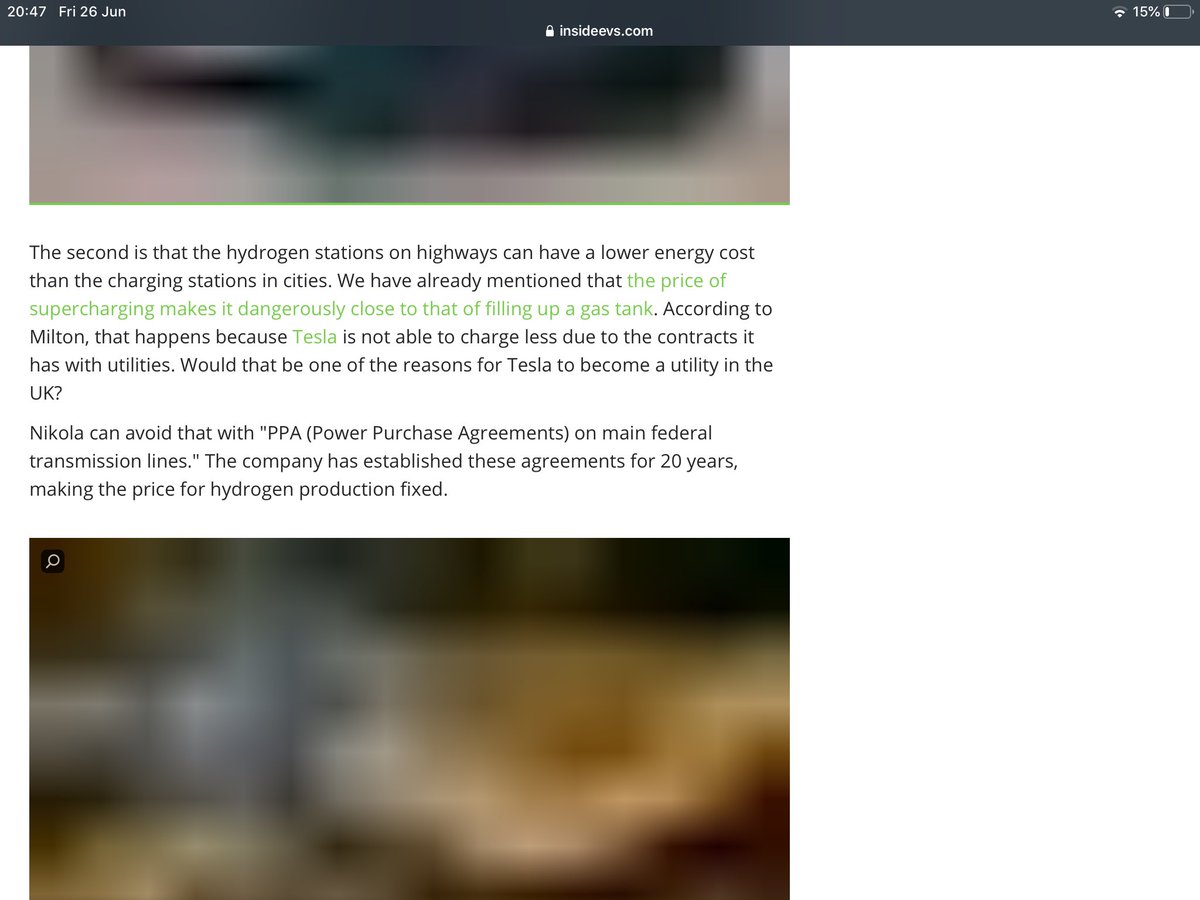
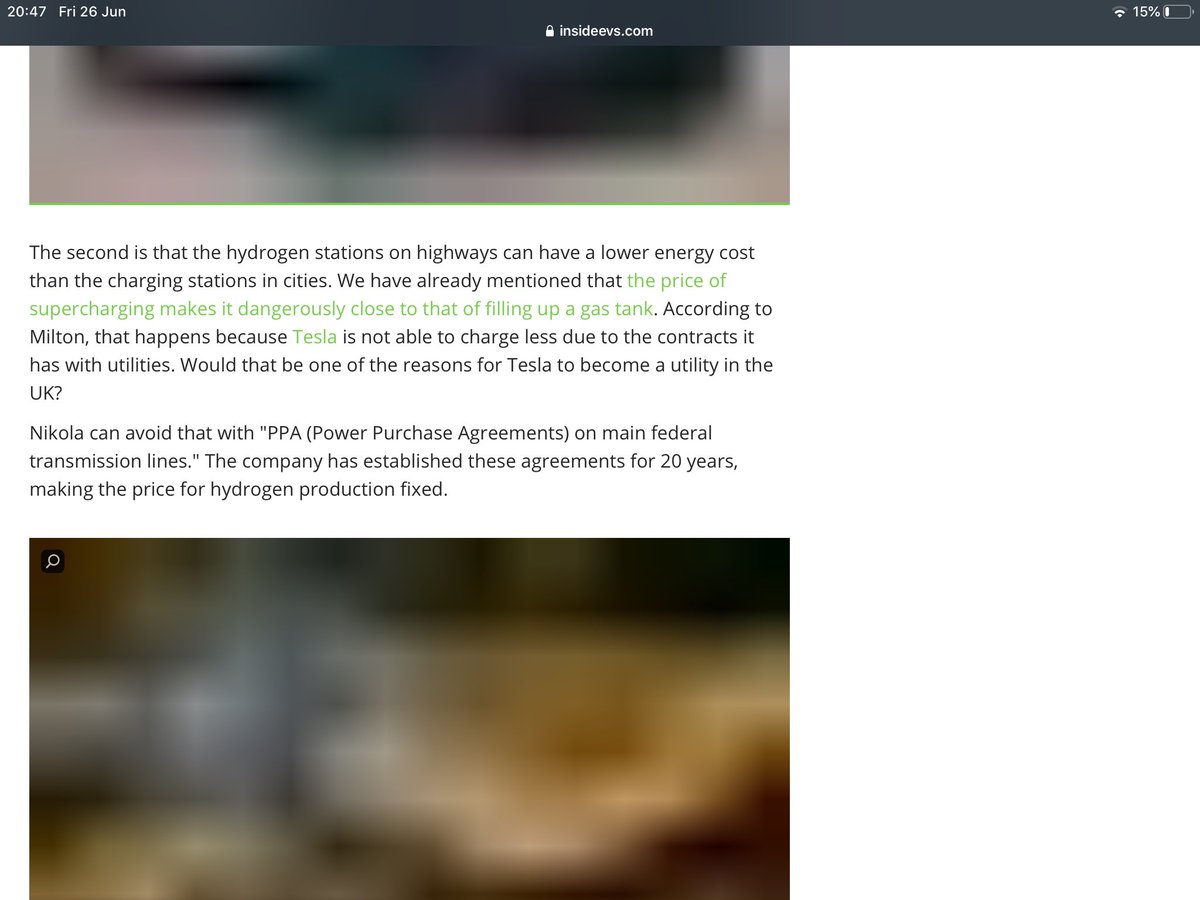
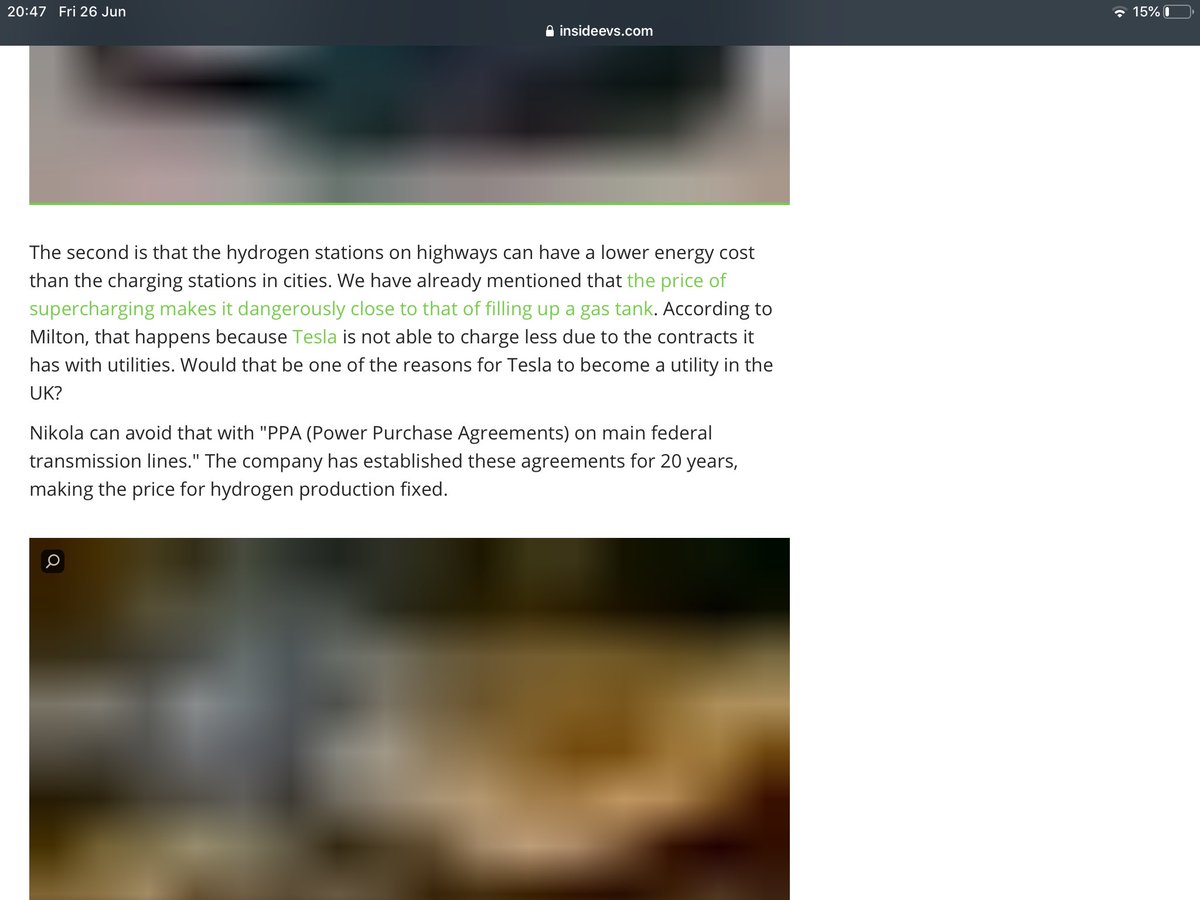
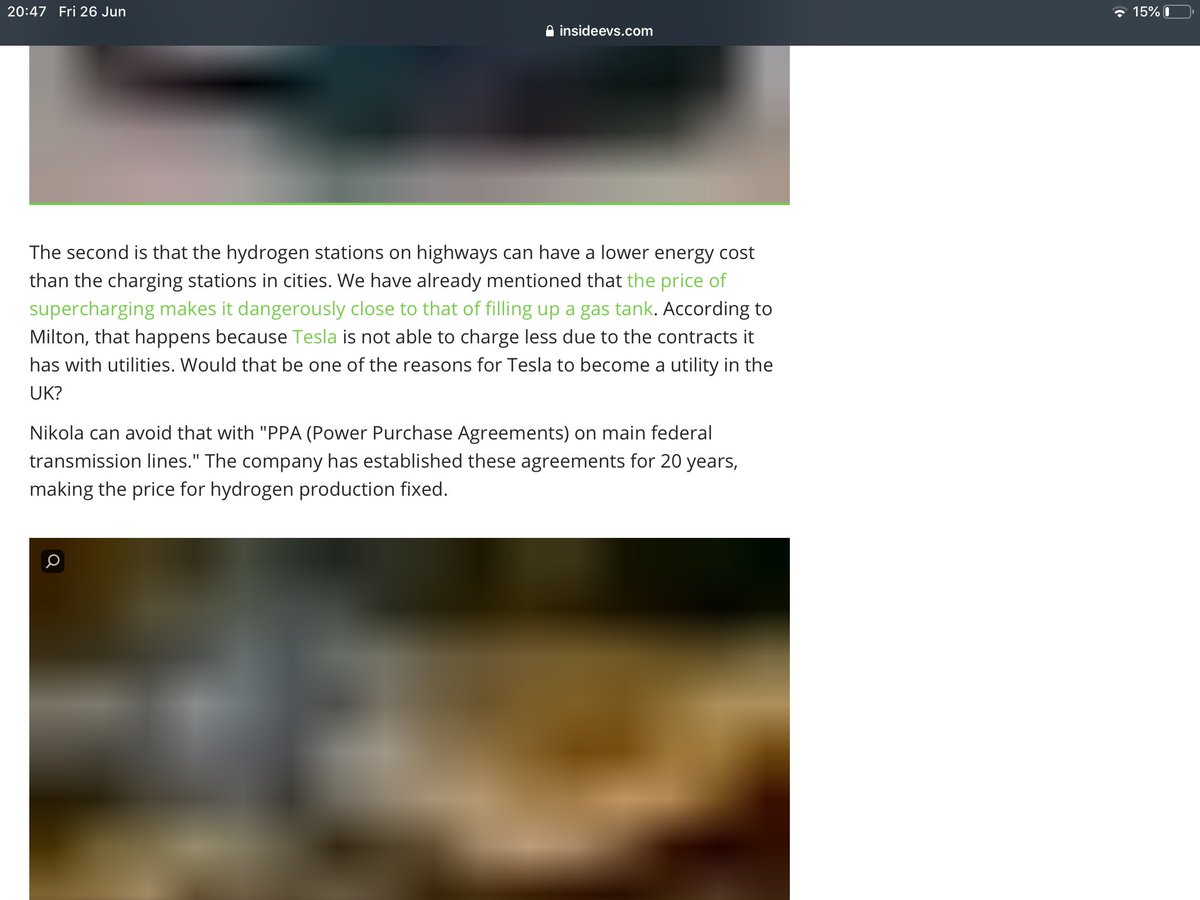
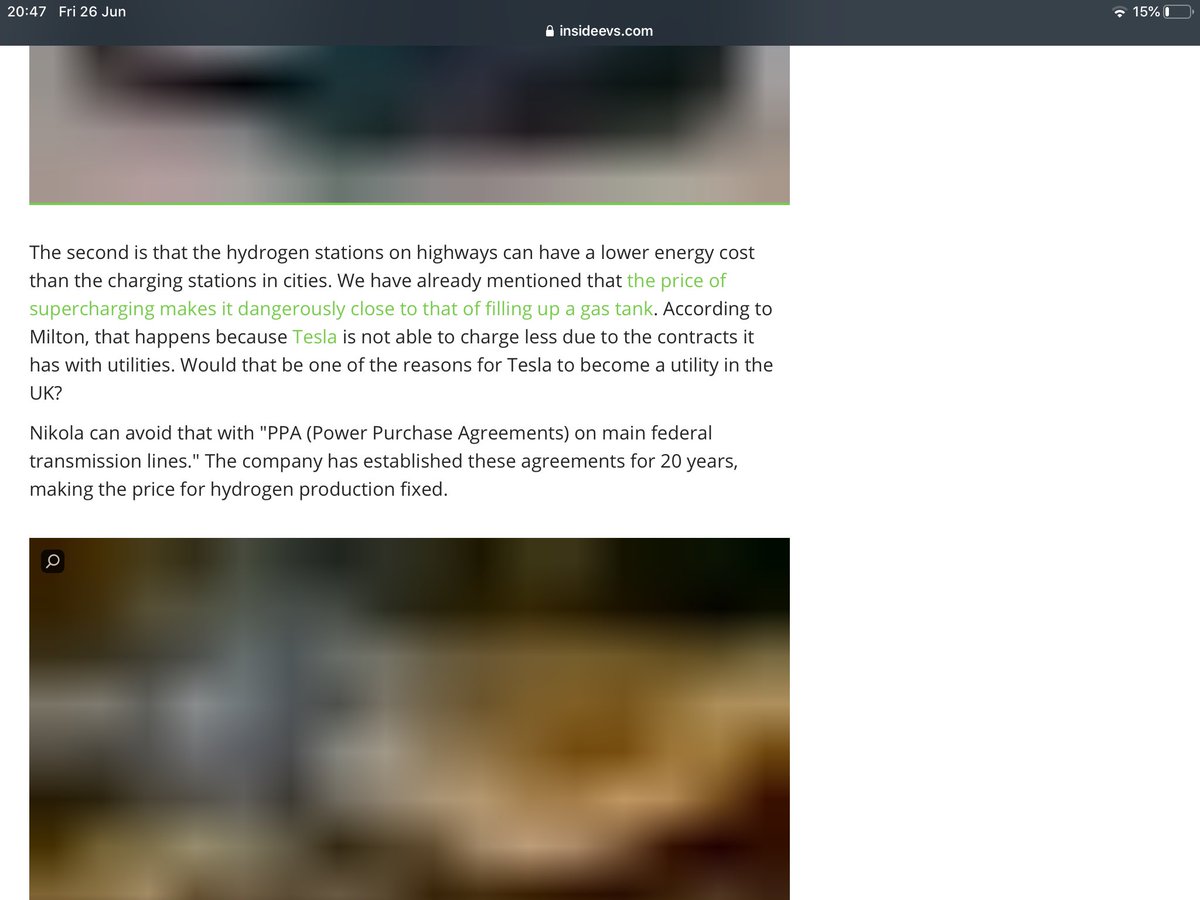
![[I wonder how many tweets the thread will take this time]500 miles is $250? I don’t know how Trevor came up with this number given that he doesn’t have any hydrogen production. If I didn’t know better, I’d say he plucked the number from his arse! [I wonder how many tweets the thread will take this time]500 miles is $250? I don’t know how Trevor came up with this number given that he doesn’t have any hydrogen production. If I didn’t know better, I’d say he plucked the number from his arse!](https://pbs.twimg.com/media/Ebd3CZ0XkAALmS_.jpg)
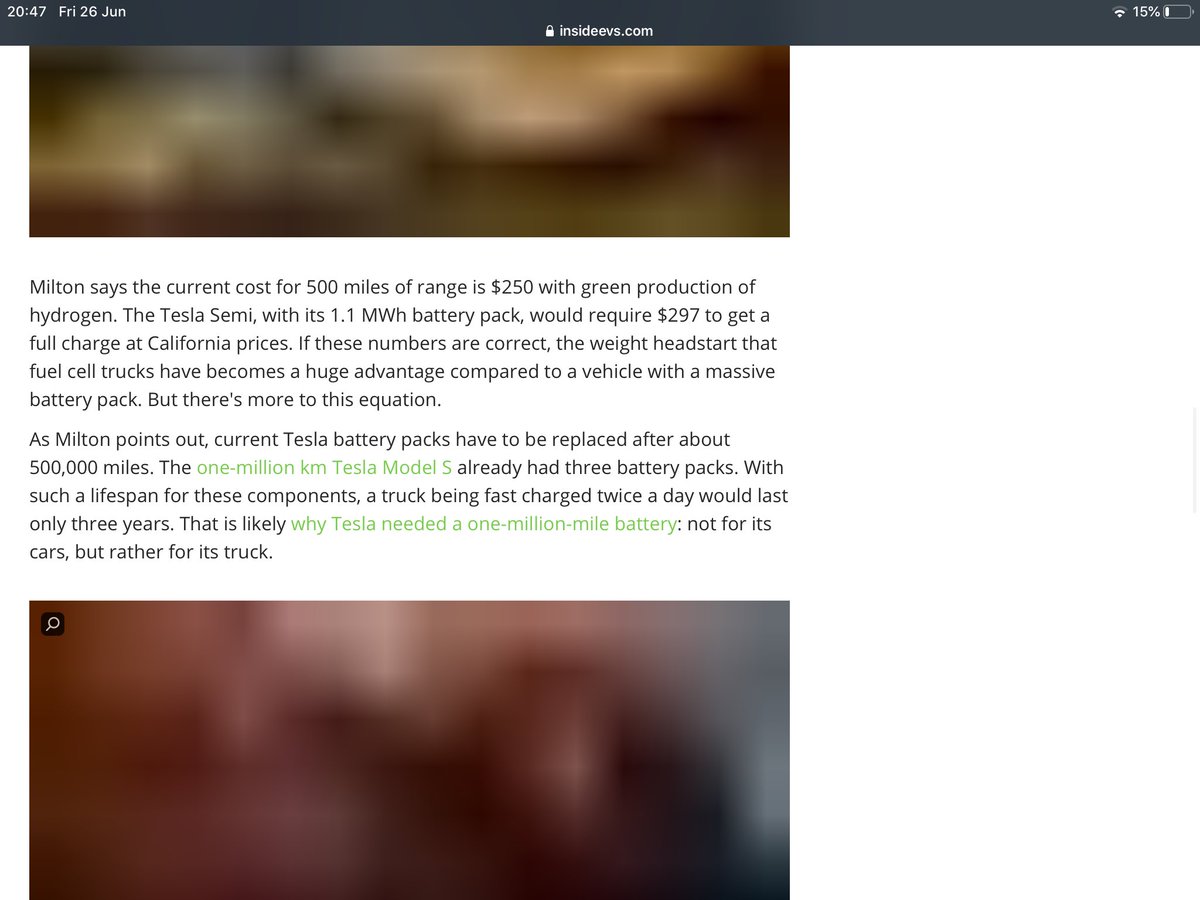

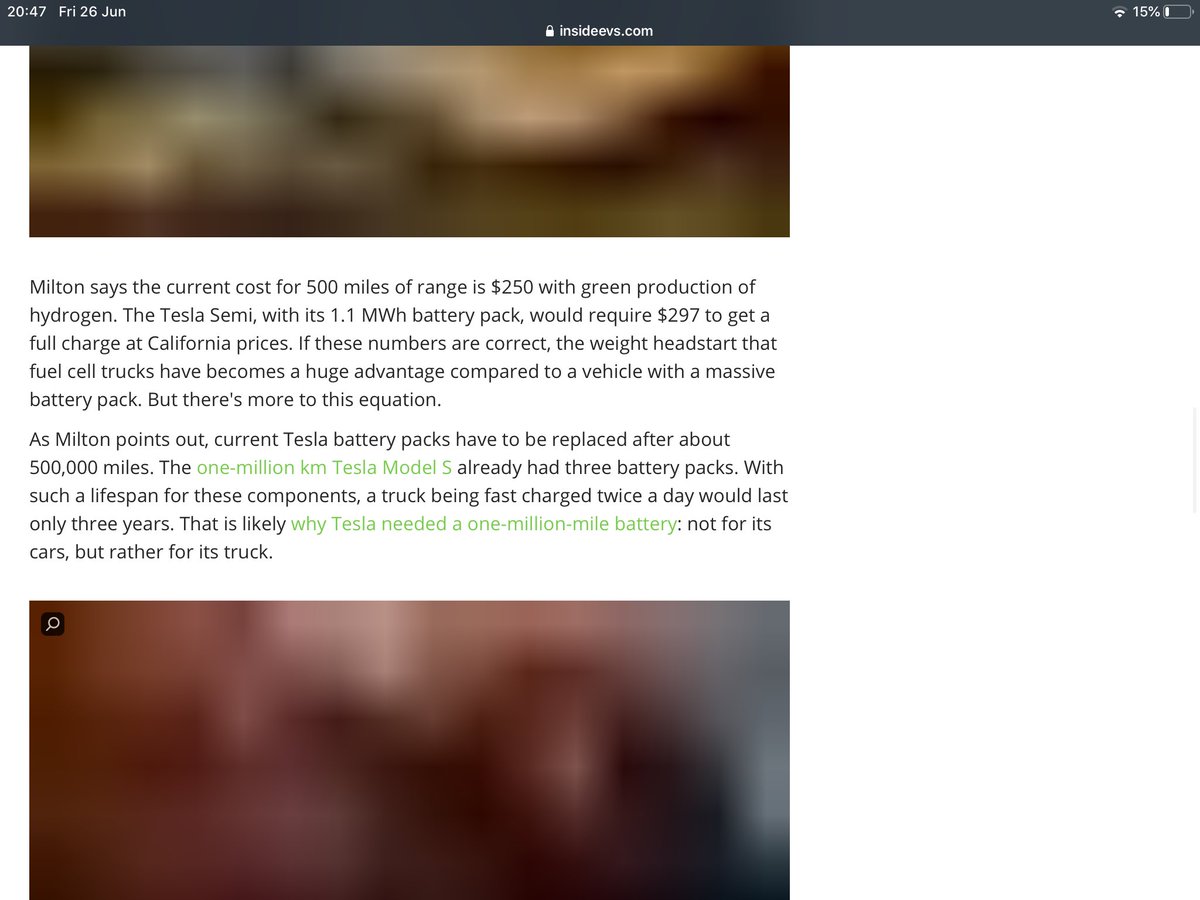

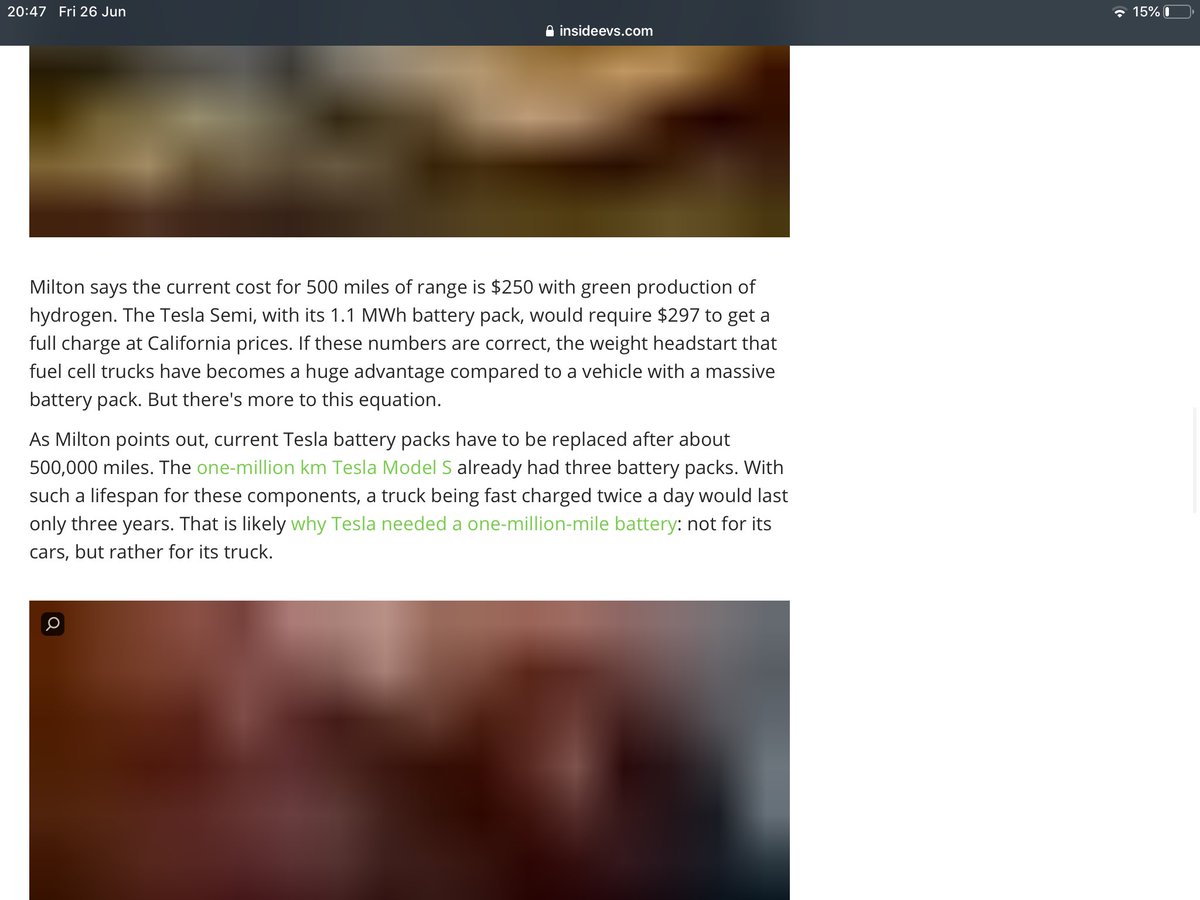
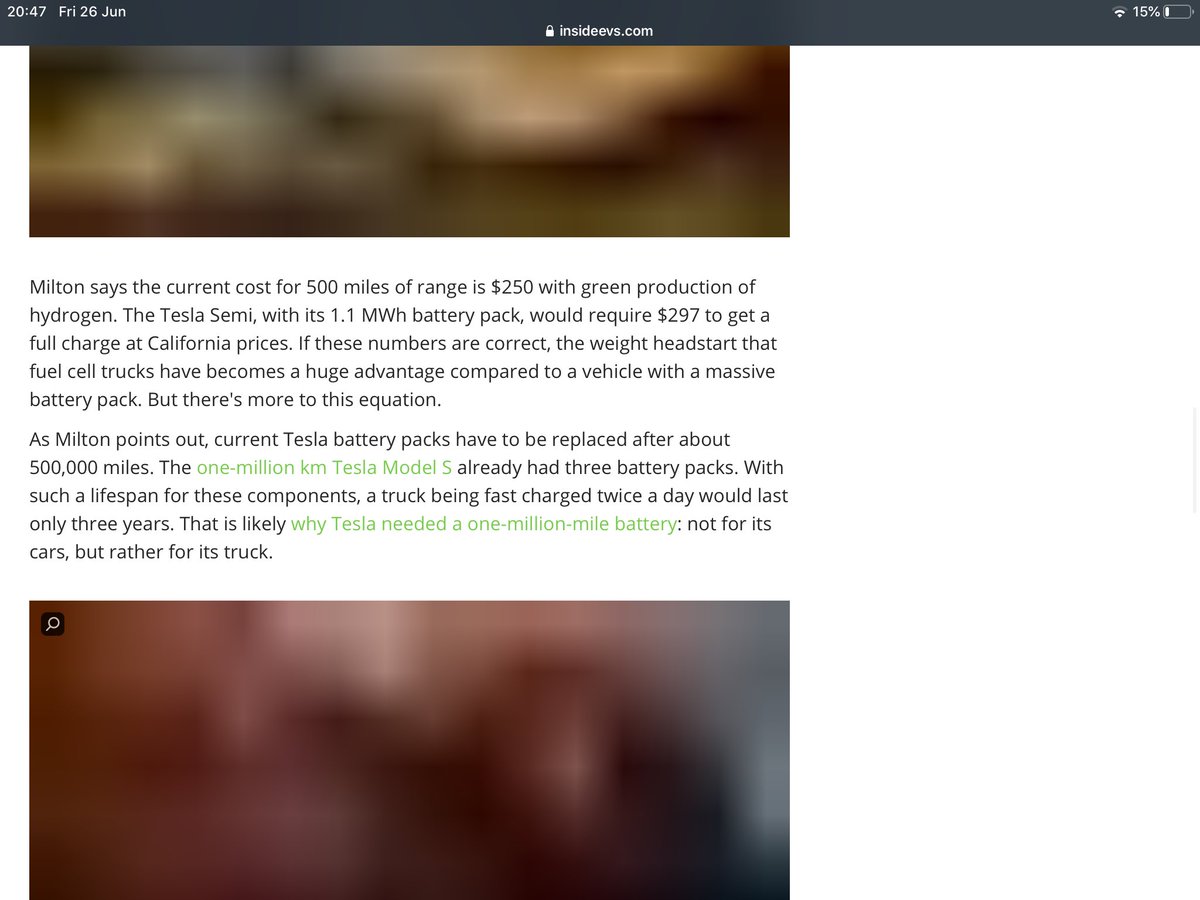
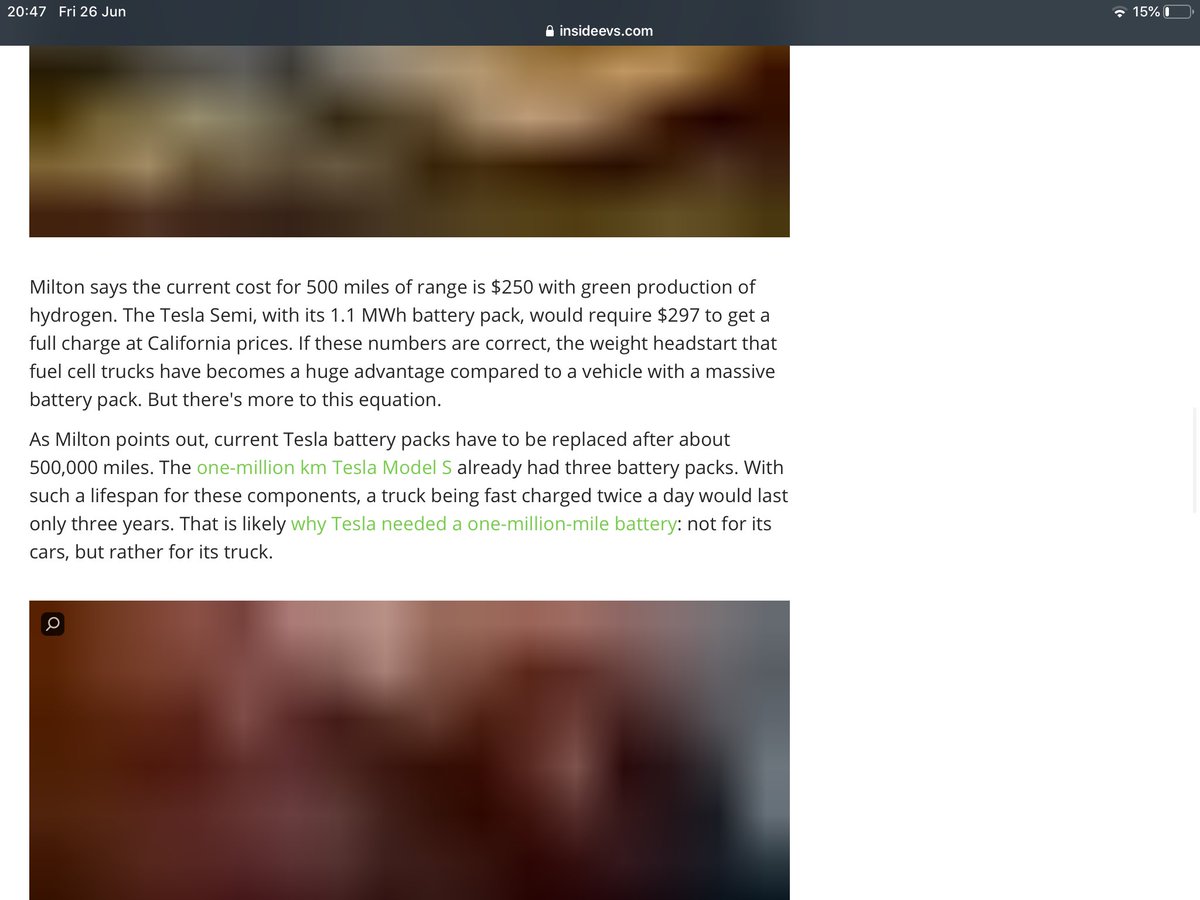
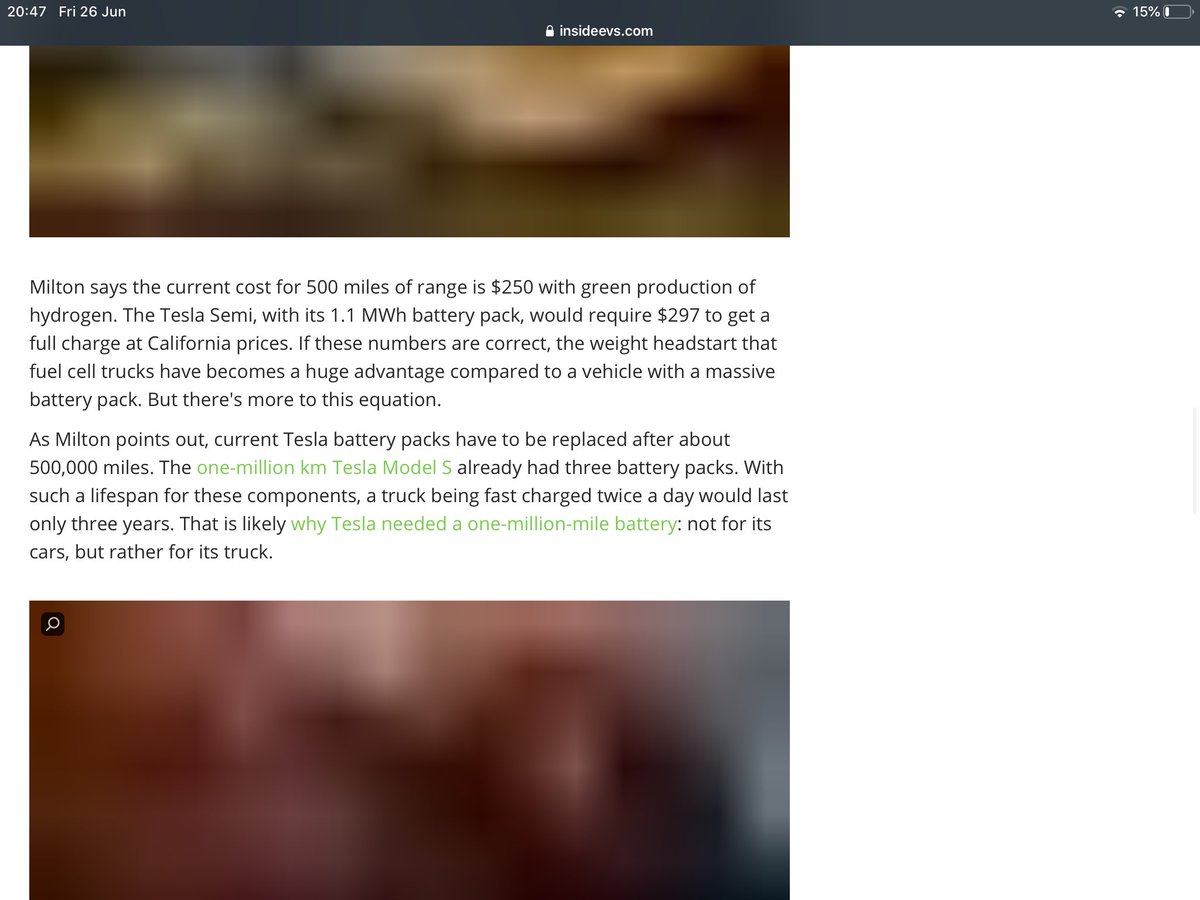
![[Wake up! This isn’t over yet]Ok, I literally don’t understand the start of this sentence. Does he mean unveil them?As for the next bit, again, *Trevor is not a Tesla news source!*. Trevor doesn’t know any more than the next trucking executive. [Wake up! This isn’t over yet]Ok, I literally don’t understand the start of this sentence. Does he mean unveil them?As for the next bit, again, *Trevor is not a Tesla news source!*. Trevor doesn’t know any more than the next trucking executive.](https://pbs.twimg.com/media/Ebd8wYnXsAkxp9-.jpg)
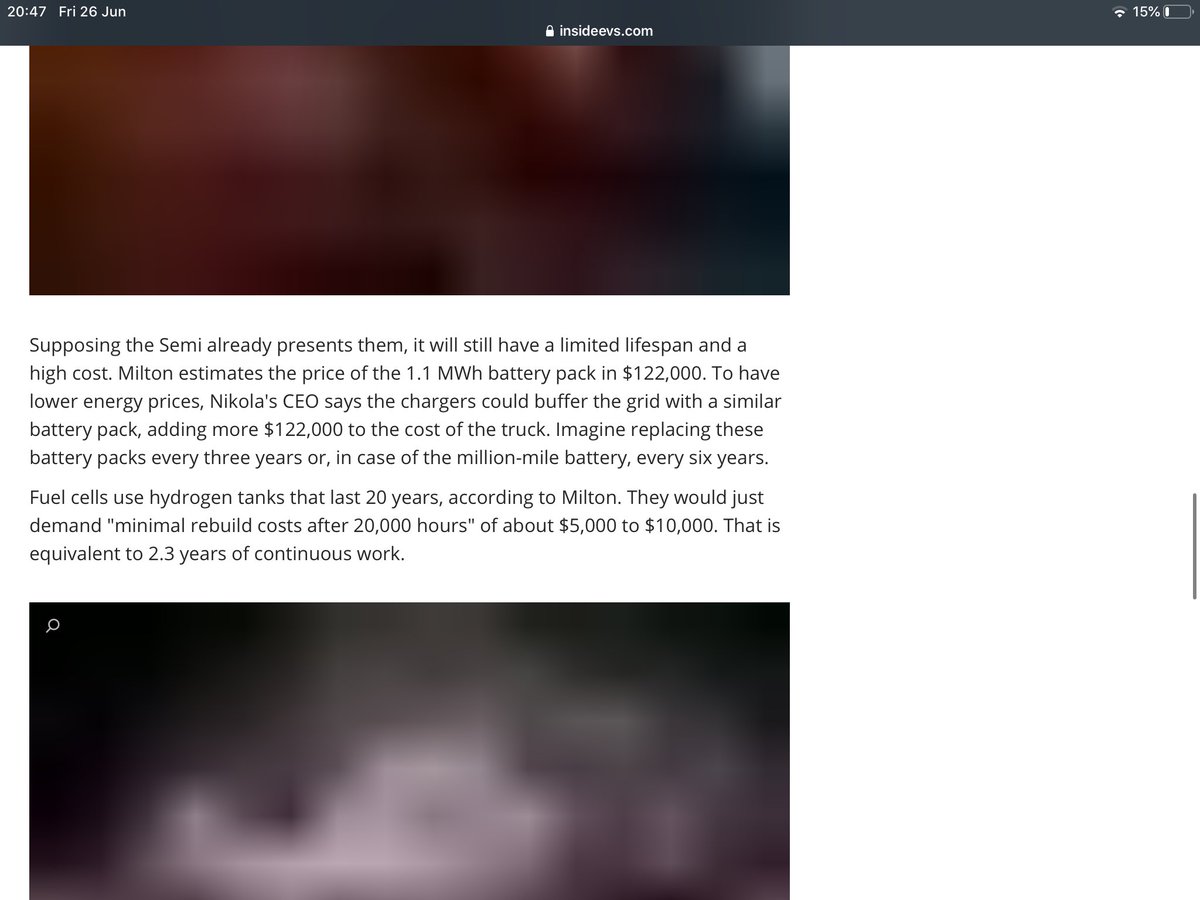

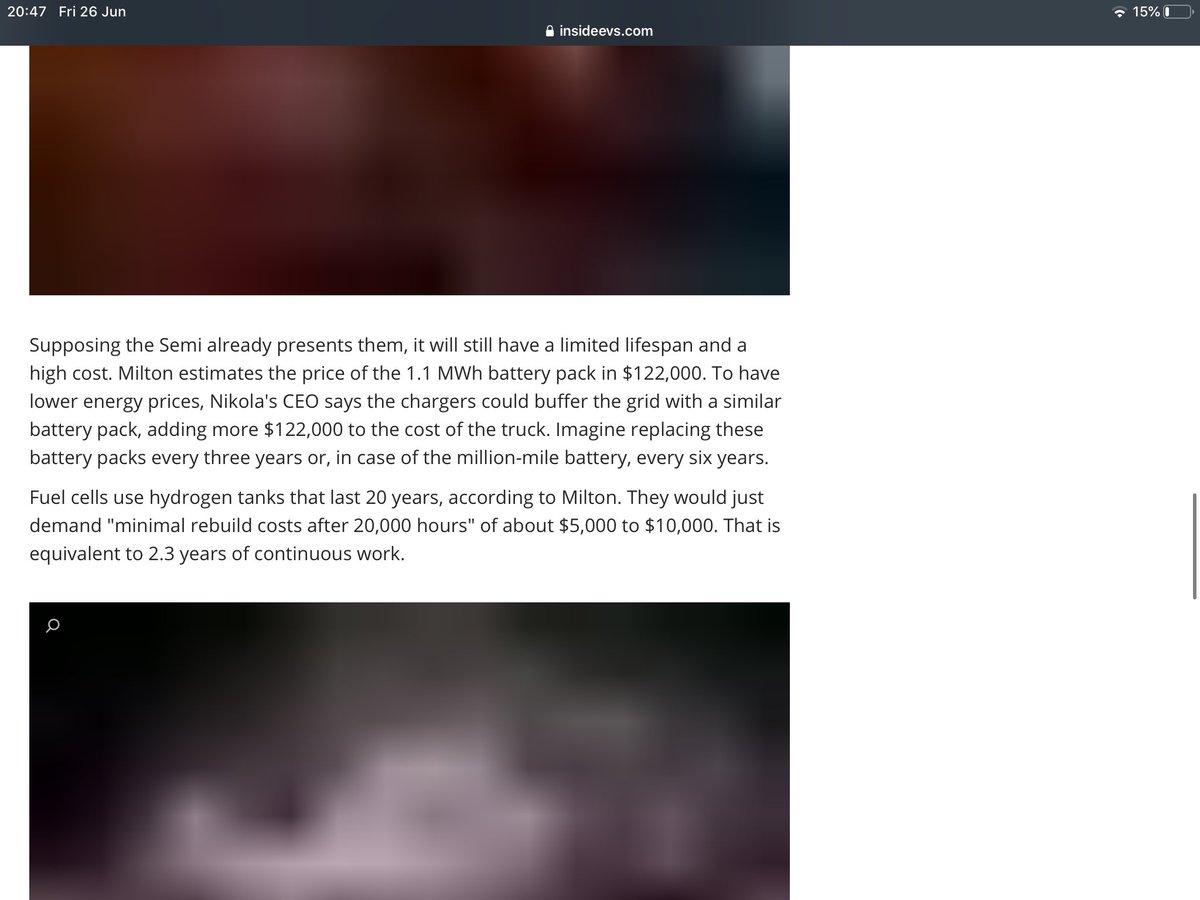

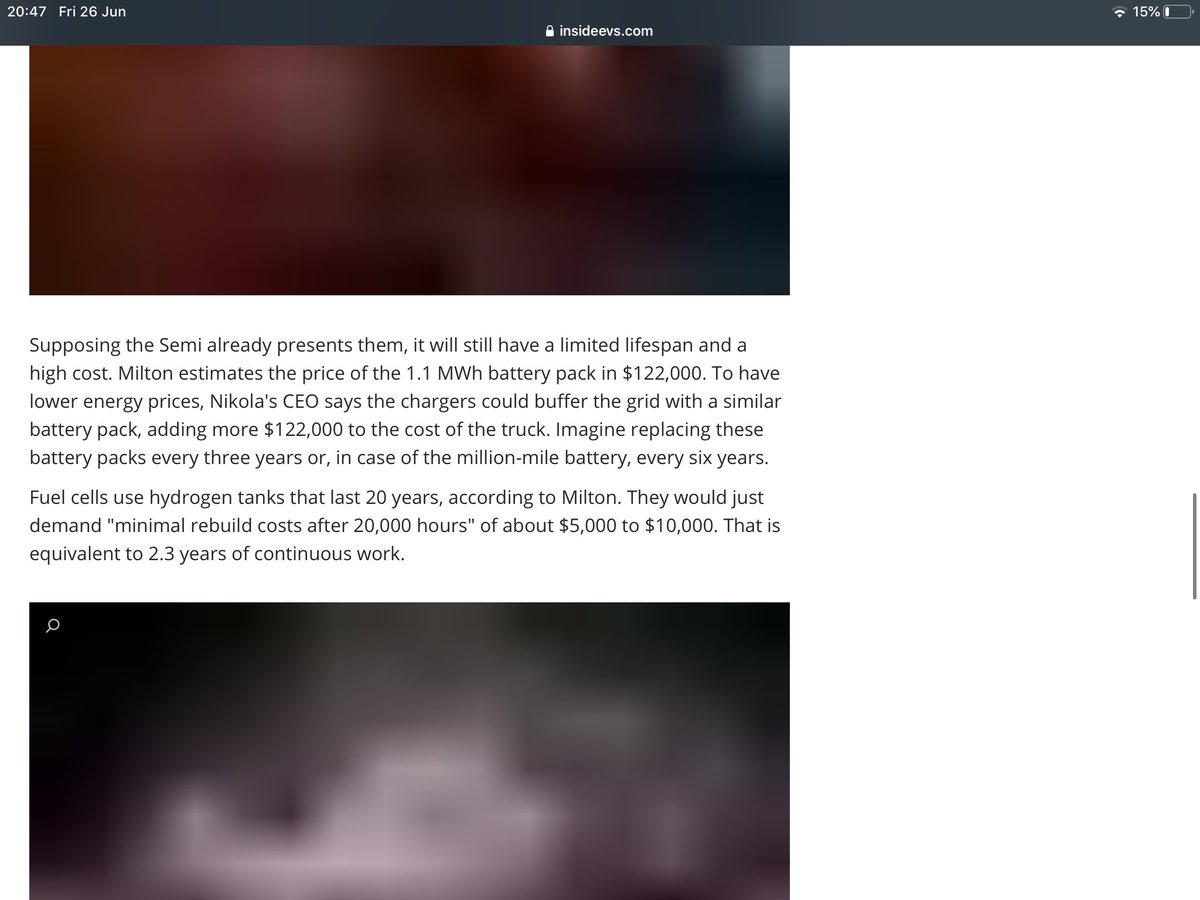
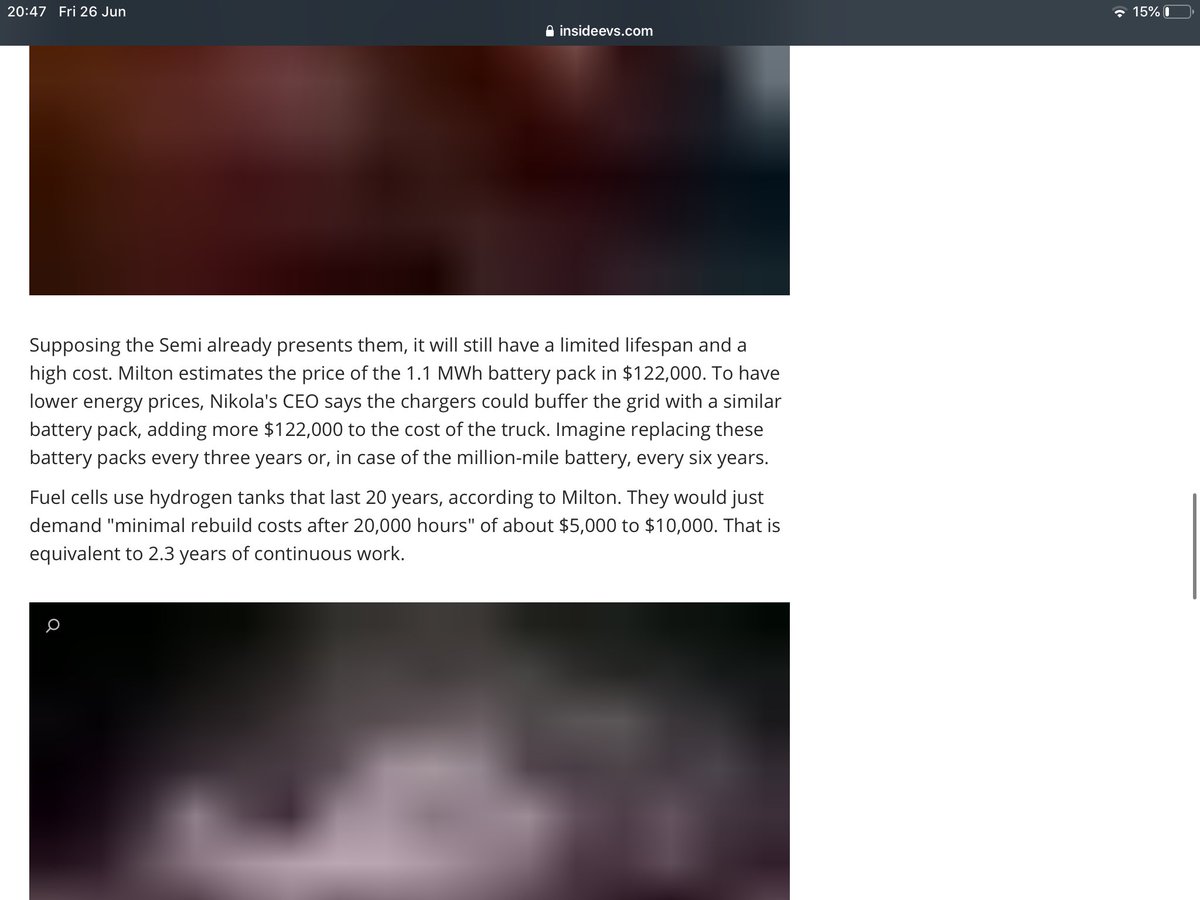
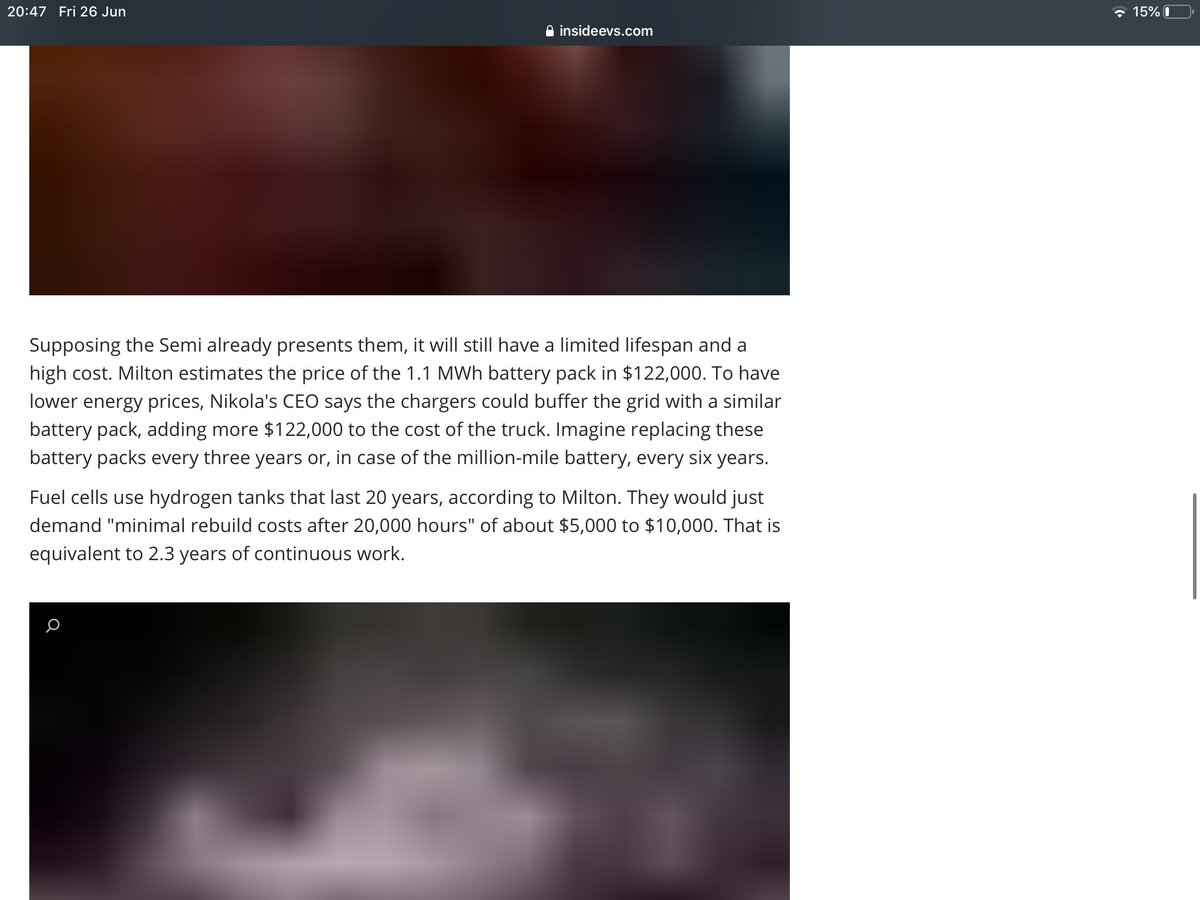

![[Still getting through it, only two chunks left, promise!]‘Even if it’s possible to get 80% in one hour’ Come on, Ruffo, did you do *any* research? It’s not at all hard to find that the 2017 prototype is capable of charging 400miles in only 30 minutes. Cut your bullshit FUD! [Still getting through it, only two chunks left, promise!]‘Even if it’s possible to get 80% in one hour’ Come on, Ruffo, did you do *any* research? It’s not at all hard to find that the 2017 prototype is capable of charging 400miles in only 30 minutes. Cut your bullshit FUD!](https://pbs.twimg.com/media/EbeC6yMXQAMKgNE.jpg)


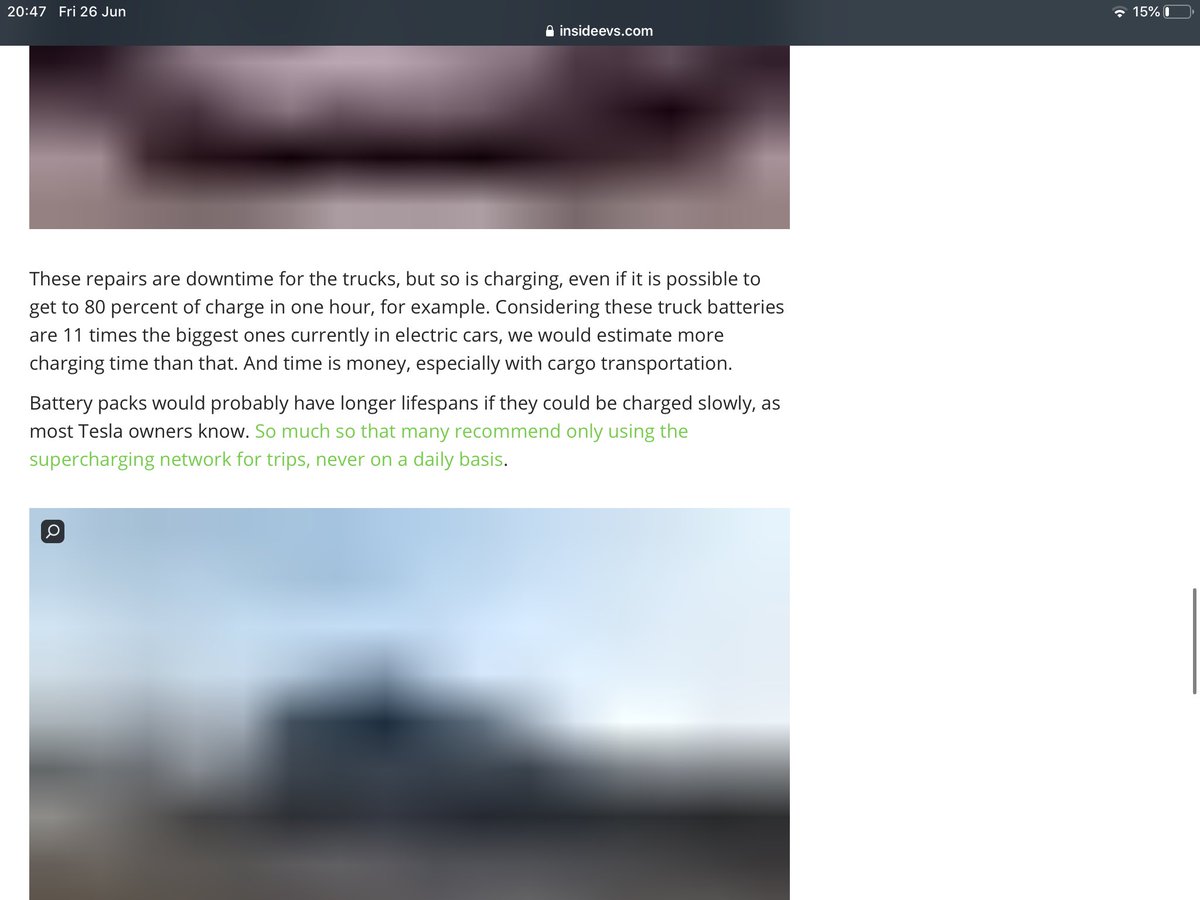

![[Last screenshot now folks]Swappable batteries. Well, swappable batteries were tried by Tesla, and a very successful prototype was built. However, they soon realised that swappable batteries were not a good solution. Primarily they are just too expensive to roll out on a large [Last screenshot now folks]Swappable batteries. Well, swappable batteries were tried by Tesla, and a very successful prototype was built. However, they soon realised that swappable batteries were not a good solution. Primarily they are just too expensive to roll out on a large](https://pbs.twimg.com/media/EbeFynNXgAcToiW.jpg)

